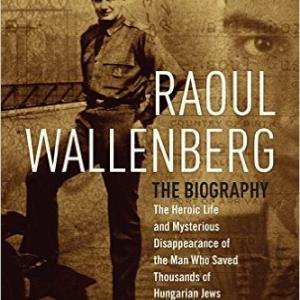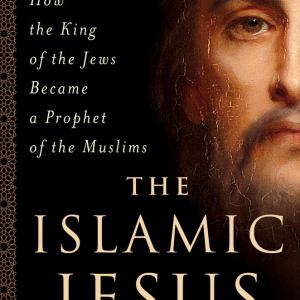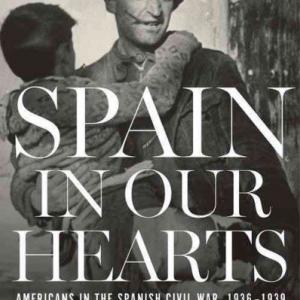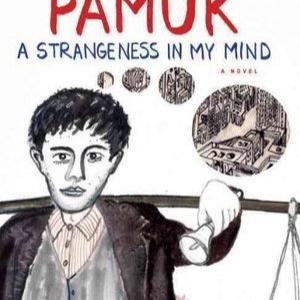Anne Colamosca is a former staff writer at Business Week and has written for many national magazines and newspapers including Columbia Journalism Review, the Christian Science Monitor, The New York Times, the New Republic, USA Today, Sojourners Magazine and Ms. Magazine. With William Wolman, she is coauthor of The Judas Economy: The Triumph of Capital and Betrayal of Work and The Great 401(k) Hoax.
Posts By This Author
The Suffragette Who Championed Working-Class Women
ON MARCH 25, 1911, the prominent British suffragette Sylvia Pankhurst, visiting the U.S. on a speaking tour, was suddenly notified about a grotesque tragedy on New York’s Lower East Side. In what would come to be known internationally as the Triangle Shirtwaist Factory fire, 146 immigrant garment workers—mostly women—had died. Locked inside the workplace, they had no chance of escape. The event changed Pankhurst’s life.
At this point, Pankhurst had already been in disagreement with her mother and older sister over their positioning of the Women’s Socialist and Political Union, a women’s suffrage advocacy group where she also worked. Her mother and older sister were moving it away from its leftist roots, marginalizing working women and emphasizing the role of wealthy women whose prominence helped drum up great media coverage for the cause.
In New York, however, Sylvia was getting deeply involved with militant working-class women tired of being pushed aside by blue-blooded suffragettes. The laundry workers’ strikes greatly impressed Pankhurst, as did the garment workers’ determination to make sure employer abuses like those that caused the Triangle fire deaths never happened again.
Christians Who Failed to Act
A HAUNTING, emotionally charged, fact-based narrative, The Color of Compromise: The Truth about the American Church’s Complicity in Racism covers 400 years of American civil rights history. It is a withering look at the role white Protestant churches played in reinforcing institutional support of slavery and racism. Its main thesis is that moderate Christians have had the clout to rebut racism but have an abysmal record of doing so. This story is woven from a survey of biographies, memoirs, classics of history, and serious journalistic research.
White moderates, Jemar Tisby demonstrates, time and again mouthed sympathetic clichés toward the black community but inevitably supported the status quo. Probably the most iconic example Tisby gives is that of Billy Graham, one of the most prominent Protestant figures of the 1950s and 1960s.
Graham talked a good game: He publicly removed ropes segregating black churchgoers at his massive rallies. But despite these “positive” optics, Graham never participated in civil rights demonstrations. He instead insisted that civil rights was a local matter. He railed against communism, feeding into the term’s use as coded language that marked “subversive” U.S. political activity as evidence of Soviet influence. When the Watts riot broke out in Los Angeles, Graham quickly declared that “rioting, looting, and crime ... have reached the point of anarchy,” while failing to explain the profound issues that caused the rebellion.
A Scholar’s Path of Loss and Belief
FORTY YEARS AGO, in 1979, Princeton University professor Elaine Pagels won the National Book Award for her groundbreaking (and best-selling) first major nonacademic book, The Gnostic Gospels. In it, Pagels lucidly described the history of a little-known early Christian sect, the Gnostics, who believed everyone had a “divine spark” within them and that with some contemplation everyone could make their own connection to God, a belief that was abhorred by more orthodox Christians. In 367 C.E., Athanasius, the bishop of Alexandria, ordered monks in Egypt to reject “illegitimate and secret books,” including Gnostic writings.
What makes Pagels’ latest book, Why Religion?: A Personal Story, impossible to put down is the way she interweaves her now 50-year study of the Gnostics with her own personal story. Over the years, she has described the profound losses—one year apart in the late 1980s—in her own life. First, the death of her 6-year-old son, Mark, from a rare pulmonary disease. Second, the death of her husband, Heinz, who fell into a 1,300-foot ravine while hiking in Colorado. Pagels’ newest account is much more detailed and painful than earlier summaries, stunningly raw, almost as though writing about recent events.
The entire ordeal made Pagels feel “as though she was being burned alive.” She had been raised as a Protestant, but her father, a biology professor at Stanford, thought religion passé. To get through these times, Pagels relied on friends, two newly adopted children, Trappist priest Thomas Keating (a teacher of contemplative practices, including centering prayer), and the rituals of a nearby Episcopal church.
High Ideals and Political Repression
IN SPRING 1917, as the stark brutality of World War I continued into its fourth year, U.S. President Woodrow Wilson reversed his advocacy for neutrality and declared war on Germany. This controversial decision allowed a financially strapped Britain to hold out against the German onslaught.
As the war ended in November 1918, Wilson, the tight-lipped, egotistical former Princeton University president and governor of New Jersey, emerged as a great hero in Europe. “Thousands ... knelt along railway tracks to offer prayers as he passed,” writes historian Patricia O’Toole in her recently released biography, The Moralist: Woodrow Wilson and the World He Made. “Wilson ... beamed and bowed and tipped his silk hat times without number.”
Back in the U.S., Wilson was not so popular. His party, the Democrats, lost both houses of Congress. On Oct. 2, 1919, Wilson suffered a paralyzing stroke after a month of travel to build support for the Treaty of Versailles to formally end World War I.
A Mismatched Pair
THERE'S NO DOUBT that both Winston Churchill and George Orwell (two of the 20th century’s harshest critics of the Soviet Union) would be fascinated by the gaggle of money launderers, KGB men, and other Vladimir Putin supplicants dominating today’s international and domestic news.
Thomas E. Ricks, a national security adviser at the New America Foundation, has written a relatively compact dual biography of the two men, Churchill and Orwell: The Fight for Freedom. It is extremely readable, but it leaves out a lot. Ricks comments: “On the surface, the two men were quite different. ... But in crucial aspects they were kindred spirits ... [who] grappled with the same great questions—Hitler and fascism, Stalin and communism.”
It’s an intriguing thesis that in the end doesn’t quite pan out. Ricks’ narrow focus on these 20th century “isms” ignores a profound difference in attitudes by Churchill and Orwell, which in the end demonstrates a deep political chasm.
From 'Grocer' to Rescuer
IN THE EARLY 1940s, Raoul Wallenberg was a slight, balding young man living modestly in Stockholm. He worked for a trading company that imported Hungarian poultry to Sweden. Wallenberg’s colleagues were mainly Hungarian Jews.
He had trained in the U.S. to be an architect. But on his return to Sweden, Wallenberg discovered that he didn’t have the engineering courses required to be hired in his homeland. His other career alternative, banking, also eluded him. The extended Wallenberg family owned one of Sweden’s most prosperous banks, Stockholms Enskilda Bank. But they found Wallenberg to be overly talkative, too artistically inclined, and having a penchant for drama that did not signal, for them, the makings of a top-drawer Swedish banker. So Wallenberg fell into depression, feeling that he was a failure, now known to his family disparagingly as “the grocer.”
Yet this unfulfilled young man would become, virtually overnight, one of the great heroes of World War II.
Veteran Swedish journalist Ingrid Carlberg has written a remarkable, nuanced, 600-page biography featuring extensive original research and new material: Raoul Wallenberg: The Heroic Life and Mysterious Disappearance of the Man Who Saved Thousands of Hungarian Jews from the Holocaust. The English translation of this award-winning work was released earlier this year.
When the Germans sent 500 Norwegians to Auschwitz in late 1942, the outraged Swedish government, which had remained neutral, declared that Sweden would accept any Jew who could make it to the Swedish border. They also decided to set up a special humanitarian aid mission in Budapest to help Hungarian Jews being annihilated by Hitler’s troops. A colleague at the trading company immediately recommended Wallenberg to the Swedish Foreign Mission to head the new mission.
A Complicated Reformer
ON Oct. 31, 1517, an intense 33-year-old Catholic monk with deep-set eyes and a prominent chin nailed an announcement of proposed points—95 theses—for a university discussion to the door of the Castle Church in Wittenberg, Germany. Martin Luther, a well-respected University of Wittenberg professor and administrator, was attacking the sale of indulgences by the Roman Catholic Church, in which the well-to-do “bought” their relatives out of purgatory by investing in “good works” for the church. Poorer people followed suit with a few coins.
Luther was far from the only critic of indulgences, but his action got attention. Intelligent and charismatic, he was not easily dismissed. He sparked the Protestant Reformation, marking its 500th anniversary this year, at that church door. This review touches on three Luther biographies: chiefly the new Martin Luther: Renegade and Prophet, by Lyndal Roper, the first woman named Regius Professor of History at Oxford University, but also Brand Luther, by Andrew Pettegree, and Martin Luther: Visionary Reformer, by Scott H. Hendrix.
Luther’s fame grew after he refused to recant his criticisms of the Catholic Church at the 1521 Diet of Worms, in front of Charles V, the Holy Roman Emperor. Luther was declared a heretic and excommunicated. This incident, Roper writes, “probably did more to win people over to the Reformation and shape their hopes and expectations than did his theology.”
Crank or Prophet?
EVEN AFTER 200 years, Henry David Thoreau continues to be a controversial (and, to some, annoying) figure. In a 2015 New Yorker article titled “Pond Scum,” Kathryn Schulz eviscerates the 19th century author of Walden, describing him as “self-obsessed: narcissistic, fanatical about self control.”
Schulz is not alone in her criticism. In Thoreau’s own beloved village of Concord, Mass., he was attacked for being a hypocrite because he would slip away from his hand-built cabin in the woods to enjoy hot meals and drop off his laundry at the family home. This after he had brazenly declared himself self-sufficient. To make matters worse, he thundered against alcohol, gluttony, and sex in Walden, just as many were happily putting Puritanism behind them.
Yet Thoreau not only endures but is thriving in today’s 21st century zeitgeist. He has “come down to us in ice, chilled into a misanthrope prickly with spines,” declares Laura Dassow Walls, author of a recently released biography, Henry David Thoreau: A Life.
Walls writes of Thoreau set in a New England deep in the throes of change. Ever mindful of the worrisome new global economy, Thoreau sought out and wrote about those being left out and struggling. His subjects included Native Americans, Irish immigrants, and ex-slaves, who were living precarious lives along Walden Pond. Perhaps his interest stemmed from the fact that, for years, Thoreau’s own extended family lived a life of penury, according to Walls, before the small pencil factory they ran in their backyard prospered, making them comfortable during Thoreau’s adult years.
Roots and Relations
AFTER A CHRISTIAN missionary handed Mustafa Akyol a Bible on a busy Istanbul street, the Turkish journalist became fascinated with the many similarities between his Muslim faith, Christianity, and Judaism. As a moderate Muslim, Akyol had been studying the Quran with a group of friends for some time. He used his study group discussions as background to inquire about the other two religions.
The result is The Islamic Jesus, which takes the reader on a complex, winding journey, detailing many of the profound historical and religious bonds of the three religions. They “are like three siblings,” explains Fred M. Donner, a respected historian of Islam, in a University of Chicago lecture. He points out that there was quite a bit of fluidity and interchange among these “siblings” in the first few centuries after the Prophet Muhammad died in 632.
Akyol, who writes for the Turkish newspaper Hürriyet Daily News and The New York Times International Edition, became engrossed early on with the different ways that Jesus is portrayed in the New Testament and the Quran. The New Testament, of course, describes Jesus as divine, part of the Trinity, and the son of God. The Quran is reverential toward Jesus, and he is seen as the last Jewish prophet, but not as divine. The Islamic view is that there is only one God, and no Trinity.
Ideologies and Idealism
FUELED BY DEEP economic insecurity, terrorist acts, and an influx of thousands of Middle Eastern refugees fleeing their homelands, a slew of bellicose, ultra-right-wing parties throughout Europe are gaining popularity in 2016. Some are reminded of the 1930s when fascists Adolf Hitler and Benito Mussolini and communist strongman Joseph Stalin all held power, along with dictators in several smaller states.
Today’s mostly democratically led Europe, of course, is a far cry from that bloody, disastrous decade, but the real angst that prevails still gives cause for alarm and analysis. In Spain in Our Hearts: Americans in the Spanish Civil War, 1936-1939, veteran journalist Adam Hochschild takes us back to what is seen as an important prelude to World War II.
In 1936, a broad coalition of mainly left-wing parties—liberals, socialists, anarchists, and communists—narrowly won national elections in Spain. In response Spanish Gen. Francisco Franco, supported by the fascist governments of Hitler and Mussolini, launched a rebellion against the new government. The left-leaning government forces and its supporters became collectively known as the Republicans; Franco and his coalition of the military, landed aristocracy, and most of the Catholic Church hierarchy were known as the Nationalists. This conflict, a democratically elected government attempting to fight off a fascist uprising, became the focus of international attention.
Hochschild explores the passion, commitment, and dangerous “boots on the ground” actions by Americans who volunteered to fight the fascists in Spain. Hochschild has excavated a rich trove of memoirs, letters, and unpublished books that these volunteers left behind.
A Gentle Life
WHILE OTHER Turkish writers choose to live outside the country, Nobel Prize-winning author Orhan Pamuk—except for short periods—still lives in Istanbul, Turkey, in the building where he was raised. It is not exactly a safe, secure life. He has already faced charges for making anti-Turkish remarks regarding the long-denied mass killings of Armenians by the Ottoman Empire during World War I. He fled the country for more than a year until charges were dropped (due in part to pressure from high- profile writers that included Gabriel García Márquez). And since then, numerous other writers and journalists have been arrested by the increasingly authoritarian government.
Pamuk’s newest and ninth novel, A Strangeness in My Mind, took him six years to write and release, as he has struggled against conservative forces who call him a “Western stooge.” Like Istanbul: Memories and the City, a memoir by Pamuk, A Strangeness in My Mind is a double portrait of the main character, Mevlut Karataş, and the city of Istanbul. It is a postmodern fairy tale, a mesmerizing odyssey, a coming-of-age urban fable.
Mevlut is a street vendor who sells a fermented wheat drink, boza, which became popular in the days of the Ottoman Empire. Through Mevlut’s prism we become acquainted with a city of 14 million—up an astounding 12 million people since Pamuk was born in 1952. Pamuk has described Mevlut “as a man of immense imagination ... he sees and feels things in the streets that no one else does.” He is a quietly observant Muslim, modest, shy, and with his own inner sense of holiness and of “strangeness.” Like Pamuk’s own character in Istanbul, Mevlut is a lonely dreamer, living outside of the mainstream, caught up in his own imaginary world, often being judged harshly by those around him.
An Ambiguous Political Prophet
THE KENNAN DIARIES, carefully edited by Frank Costigliola, a University of Connecticut historian, covers an amazing and sometimes disturbing 88-year period of personal journal-writing by George F. Kennan, who became the most famous diplomat-intellectual of the 20th century.
Born in 1904 (he died in 2005) Kennan, a Milwaukee native, grew up in an upper-class Scotch-Irish Presbyterian family with three older sisters and a father who was a tax attorney.
After graduating from Princeton, Kennan became a Foreign Service officer with the State Department, eventually serving in posts throughout Europe. But Kennan’s first love was Russia. He wrote in his diary that “he had a mystical connection to Leningrad, as though he had once lived there.” He was offered a three-year university stint in Berlin by the State Department—Kennan’s boss wanted him to be educated like a pre-Bolshevik Russian gentleman. Kennan’s grasp of the Russian language and history became exceptional. Together with his prodigious analytical skills, it would be the foundation of his brilliant career.
After 20 years abroad, Kennan fired off his famous 5,540-word “Long Telegram” on Feb. 22, 1946, from Moscow to Washington. Soon afterward, in July 1947, he wrote another piece in Foreign Affairs under the byline “X.” In the two pieces he said that the Soviets under Stalin would try aggressively to expand, but that the U.S. should not employ military means to stop them. Instead, Kennan advocated “containment,” heavily monitoring the Russians with hard-headed diplomacy and tough talk. He also stated that the Soviet Union would eventually self-destruct.
Brothers in Faith and Defiance
NO ORDINARY MEN: Dietrich Bonhoeffer and Hans von Dohnanyi, Resisters Against Hitler in Church and State is a tightly woven story framed by the sophisticated historical analysis of its two authors, former senior Farrar, Straus, and Giroux editor Elisabeth Sifton (daughter of theologian Reinhold Niebuhr) and Columbia University professor emeritus Fritz Stern, a famed German scholar. The book profiles two brave young men—Bonhoeffer, a theologian and minister deeply involved in fighting the Nazis’ efforts to control the German Protestant churches, and Dohnanyi, a brilliant lawyer (son of Hungarian composer Ernst Dohnanyi) working in the German Ministry of Justice, who used his key position to methodically collect evidence against the Nazi regime.
Sifton and Stern portray Dohnanyi in detail as a leader in the small but high-powered German resistance movement. Brig. Gen. Hans Oster, a resistance member, hired Dohnanyi away from the Ministry of Justice ostensibly to help run the Abwehr, a German military intelligence organization that was also the center of the anti-Hitler resistance, in 1939. Dietrich Bonhoeffer was then recruited by Dohnanyi to be part of this team. Dohnanyi’s wife, Christine (Bonhoeffer’s sister), is also revealed as a significant influence on and aide to her husband.
The slim, 157-page volume is an important new historical work in the growing field of research on the German resistance movement during World War II. It is a penetrating look at Dohnanyi’s dangerous operations against the Nazis with historical perspective that other books on him and Bonhoeffer lack. Earlier biographies, written mainly by church people, more or less emphasized Bonheoffer as a singular hero fighting Hitler. Bonhoeffer was indeed very brave and traveled thousands of miles abroad while working as an agent for the Abwehr, but he was just one of a circle of resisters.
The Party of Ayn Rand's Discontent
SEEMINGLY OUT of nowhere, the newly founded conservative tea party delivered a stunning blow to Democrats in the November 2010 election, causing them to lose control of the U.S. House of Representatives. Just two years earlier, the 2008 election had severely weakened Republican forces with the election of the country’s first African-American president, Barack Obama, who won by promising change after eight years of the Bush administration.
Two recently published, fascinating books, The Tea Party and the Remaking of Republican Conservatism, by Harvard social policy experts Theda Skocpol and Vanessa Williamson, and Ayn Rand Nation, by award-winning financial journalist Gary Weiss, provide a treasure trove of careful research, new material, and balanced reporting that throws much-needed light on how the tea party was born and how it became a lightning rod for many frustrated Americans.
Who are the tea party members? They are, for the most part, middle-class white people over the age of 45, as the general media have already reported. But as one tea partier told the Harvard researchers, “We are not a bunch of uneducated, racist rednecks.” Her view is, in part, corroborated in the book. Skocpol and Williamson found through hundreds of interviews that the movement is indeed made up of many college-educated people (some graduates, some not) who live throughout the U.S. They are engineers, IT managers, small businesspeople, home contractors, and teachers. Although as a group they lost jobs, businesses, and retirement money in the recent recession, they were not hit nearly as hard, report the Harvard researchers, as those with lower incomes.
What brought out tea party rage? One source was an unlikely populist crusader, CNBC financial broadcaster Rick Santelli, who suddenly began ranting on the air on Feb. 19, 2009, that “the government is rewarding bad behavior” by subsidizing those about to lose their homes through President Obama’s home foreclosure relief plan. His rant was picked up by the Drudge Report and then rebroadcast through the major media.











